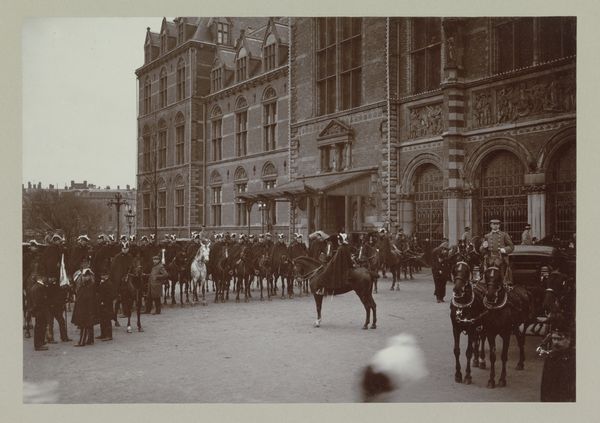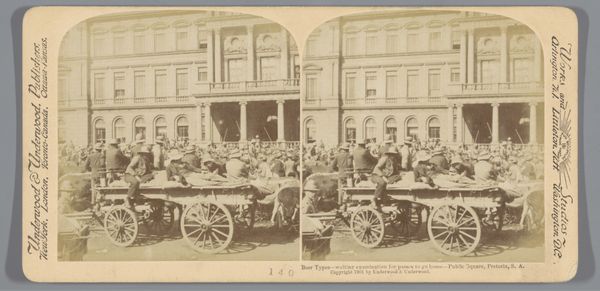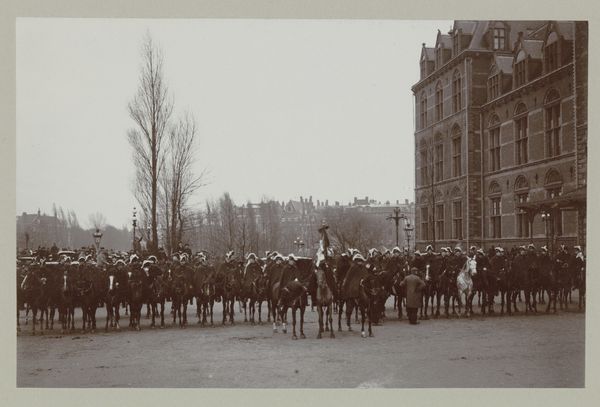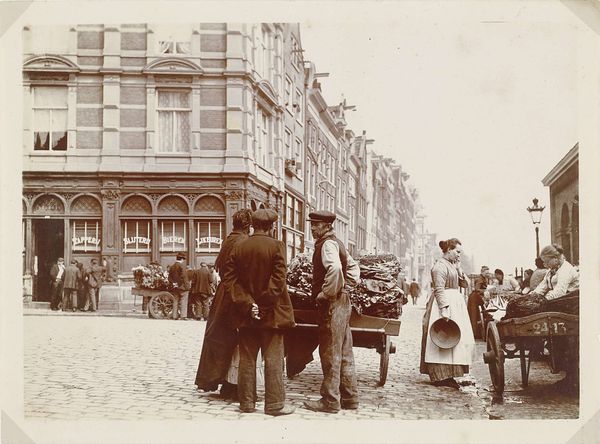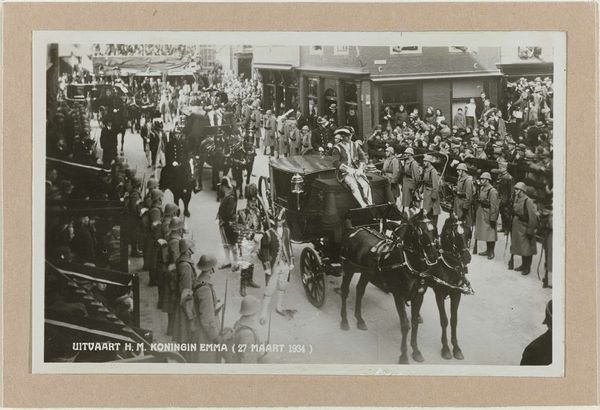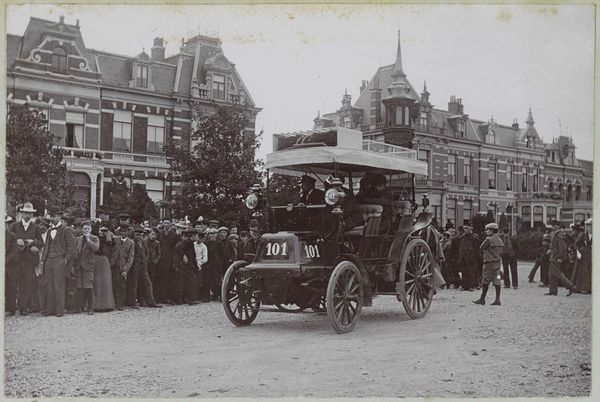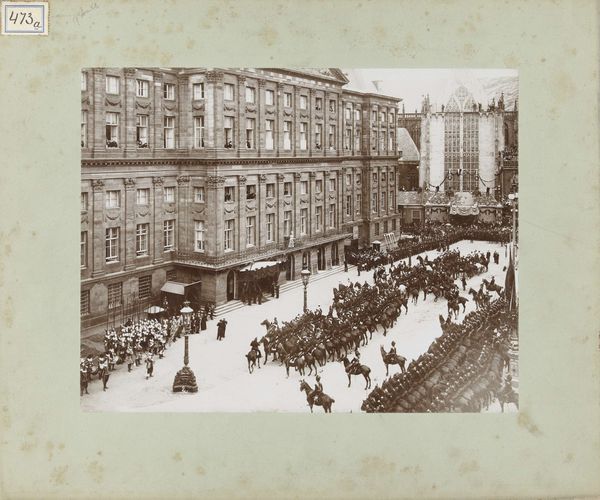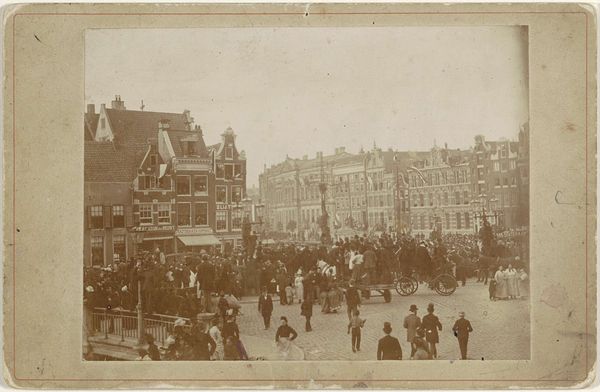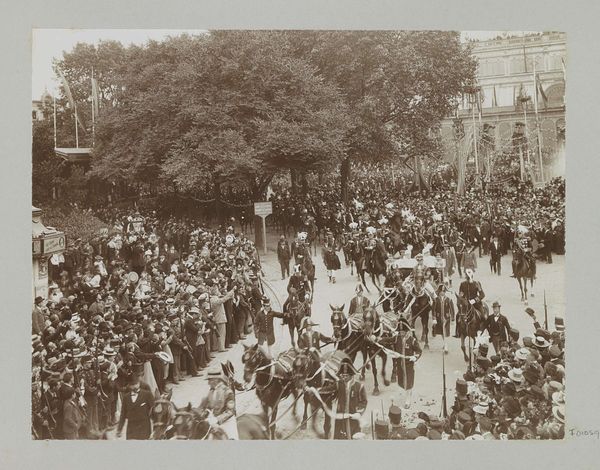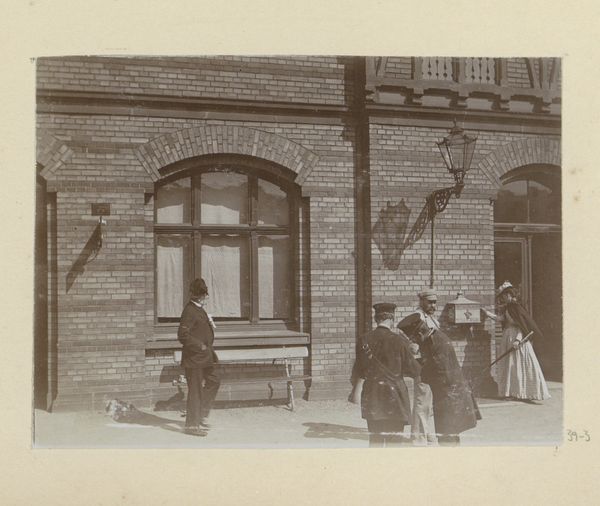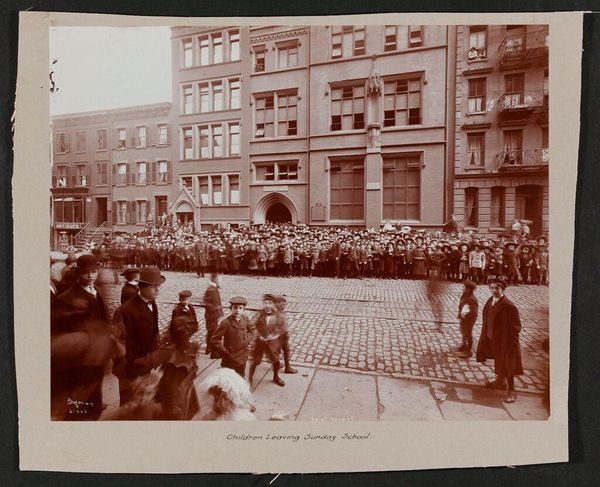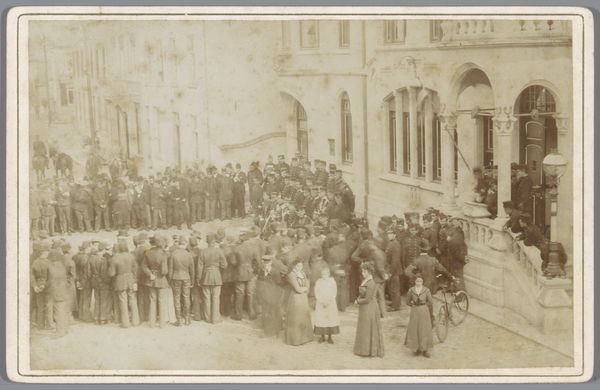
print, photography, albumen-print
#
portrait
#
print photography
# print
#
photography
#
cityscape
#
albumen-print
Dimensions: height 143 mm, width 199 mm, height 261 mm, width 305 mm
Copyright: Rijks Museum: Open Domain
Curator: This albumen print by Albert Greiner captures a specific historical moment: the inauguration of Queen Wilhelmina in front of the Rijksmuseum in 1898. What strikes you about it? Editor: Immediately, I'm drawn to the mood. There's an air of anticipation, but also formality and distance. The tones are quite muted; it has a sort of sepia wash. I think it reinforces the idea of royalty—something apart. Curator: I agree, that sepia tone links it back to the older photographic traditions but here serves to mythologize this relatively young queen's symbolic importance for the kingdom. The photographic image creates a cultural artifact imbued with that importance, connecting her to a longer lineage of national identity. The muted color enhances that historical feel. Editor: It's interesting to think about photography, even then, shaping public perception and manufacturing this kind of regal image. Look at the architecture of the Rijksmuseum in the backdrop, solid, imposing – it reinforces power. Then notice the way the crowd is arranged. So many anonymous male figures facing forward. Where are the women? Where's the diversity? Curator: Those rigid lines of men are so evocative of the strictures and conventions of that time. I see a city eager to publicly show support of a female head of state. They signify a kind of "old guard," reinforcing this established order which depends on their obedience and orderliness. This sea of similar faces may reinforce a national identity more than reflecting lived realities. Editor: Precisely, and it becomes clear why the photographer frames the Queen from a distance, highlighting that divide and the construction of hierarchy. A staged event captured with what seems to be no chance for real agency of the general public. Curator: Despite this sense of formality, that very visibility granted a sort of access. Photography served to disseminate the image of the monarchy in unprecedented ways, creating new visual narratives for people to interpret. The carefully placed iconography may indeed support order, but also allows more complex ideas of sovereignty and civic pride. Editor: True. I keep thinking about visibility here, the way access has changed or *not* over time. These photographs once circulated amongst particular social echelons while being actively suppressed in others, shaping public discourse in biased ways. It’s a glimpse into the curated reality of that era. Curator: This is something that visual symbols continuously accomplish, isn’t it? Showing one aspect, and, even through their presence, hinting at everything unseen. Editor: I agree, understanding that helps me connect a seemingly straightforward historical photograph with our modern visual landscape.
Comments
No comments
Be the first to comment and join the conversation on the ultimate creative platform.
